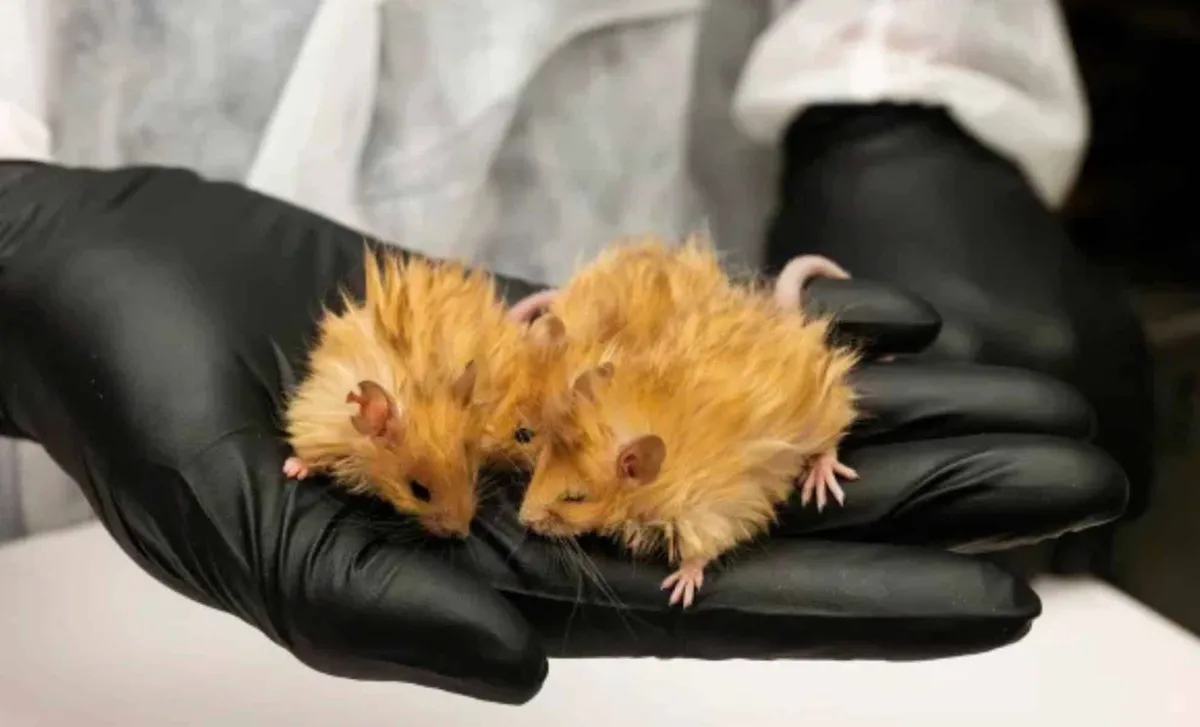
A groundbreaking achievement in biotechnology has brought scientists closer to the ambitious goal of reviving the woolly mammoth. Recently, researchers at Colossal Biosciences successfully created genetically modified "woolly mice" featuring thick, mammoth-like fur. This innovative development is a key part of the company's plan to resurrect the woolly mammoth by the year 2028. Employing advanced genetic engineering techniques, the team modified specific hair-growth genes in mice to replicate the adaptations that enabled woolly mammoths to thrive during the frigid conditions of the last Ice Age.
The findings of this significant study were published on March 4, 2025, in the preprint database BioRxiv, marking a crucial advance in the efforts of mammoth de-extinction. Researchers focused on identifying and modifying genes responsible for hair texture, length, and density—key adaptations that allowed woolly mammoths to survive in Arctic environments. The project began less than a year ago, with researchers swiftly designing and cloning genetically modified mice to test whether they could replicate mammoth-like traits. “We actually just started this work in mice in September 2024,” said Ben Lamm, co-founder and CEO of Colossal, during an interview with LiveScience. “We didn’t know they were going to be this cute.” Although these woolly mice represent just a small step in the larger endeavor to resurrect the woolly mammoth, the research offers valuable insights into how similar genetic modifications might eventually be applied to Asian elephants, the closest living relatives of the mammoth.
The Colossal team employed three different genetic engineering techniques to modify seven genes in mice, six of which are linked to fur texture, length, and color. Instead of inserting mammoth DNA directly, they identified mouse variants of genes that closely resemble those responsible for the woolly mammoth’s distinctive shaggy coat. “We haven’t taken mammoth genes and put them into a mouse,” explained Beth Shapiro, an evolutionary biologist and chief science officer at Colossal. “We’ve looked for the mouse variants of the genes that we think are useful in mammoths and then created mice that have many of these edits simultaneously.”
One significant modification involved blocking a gene called FGF-5, known to regulate hair length. This alteration resulted in mice with fur three times longer than that of standard lab mice, effectively mimicking the thick, insulating coat of a woolly mammoth. Additionally, the researchers modified two other genes found in mammoths—TGF alpha and KRT27—both of which influenced hair waviness and density. By incorporating these changes, the team successfully produced long-haired, wavy-furred mice, providing compelling evidence that multiple genetic mutations can be introduced into a single organism to create mammoth-like traits. “It’s definitely a proof of concept that you can incorporate multiple mutations into a single mouse and make its hair look like mammoth hair,” noted Vincent Lynch, an evolutionary biologist and associate professor at the University at Buffalo, who did not participate in the study.
The use of mice as a test model is essential to the broader objective of applying similar genetic modifications to Asian elephants, which Colossal plans to utilize as the genetic foundation for their woolly mammoth de-extinction project. One significant advantage of using mice is their rapid reproductive cycle, enabling researchers to quickly test and observe genetic changes. “A mouse model is super useful in this case, because unlike elephants, whose gestation lasts about 22 months, mice have a gestation period of only 20 days,” explained Beth Shapiro. This rapid turnover allows scientists to test gene edits and breed generations of modified mice within months, rather than waiting years to observe genetic changes in larger mammals.
While the woolly mice experiment demonstrates the potential for genetic modifications to produce mammoth-like traits, applying these techniques to Asian elephants poses considerable challenges. One major concern is hair density. Mice naturally possess thick fur, but elephants have far sparser hair. Even if the same genetic modifications are made, the resulting coat may not be as dense or insulating as that of a woolly mammoth. “Elephants have fur, but the density of the hair is much less than other mammals,” Lynch explained. “So even if they could make those mutations in an Asian elephant, it’s just going to be really sparse.” To fully replicate a woolly mammoth’s coat, researchers may need to introduce additional genetic modifications aimed at increasing hair density—a challenge that has yet to be resolved.
Furthermore, modifying elephant embryos is significantly more complex than working with mice. Elephants have long gestation periods, require advanced reproductive technologies, and raise ethical concerns regarding genetic engineering and conservation.
The next phase for Colossal’s team involves testing whether the woolly mice can tolerate cold temperatures better than standard mice. While the genetic edits are expected to improve insulation, the company plans to conduct cold exposure experiments to validate this hypothesis. “We know that the edits are in there, so now we just need to test what level of cold tolerance it confers,” stated Lamm.
If the woolly mice demonstrate enhanced resistance to cold, it would further support the feasibility of introducing similar adaptations in elephants, pushing the project closer to its ultimate goal. Despite the challenges that lie ahead, Colossal remains optimistic about the future of mammoth de-extinction. The company aims to produce the first woolly mammoth hybrid calves by 2028, with plans to reintroduce them into Arctic habitats to help restore grassland ecosystems and combat climate change by preventing permafrost thaw. The woolly mice experiment is just one small step in a much larger process, but it represents a significant milestone in the quest to resurrect these prehistoric giants. Whether Colossal can navigate the technical and ethical hurdles ahead remains to be seen, but for now, the project is progressing—one woolly mouse at a time.